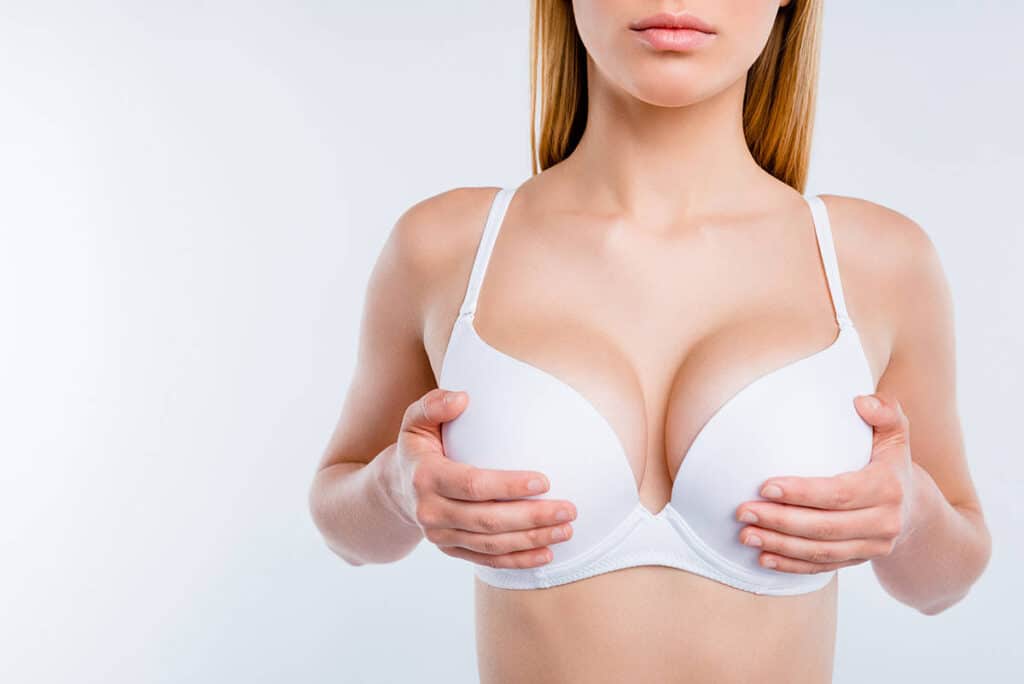
Like any procedure, breast reduction requires thorough consideration of the benefits to your quality of life and potential drawbacks. Ask yourself these questions and schedule a consultation with our board-certified plastic surgeon, Dr. C. B. Boswell, to see if breast reduction is the best breast procedure for your needs.
1. Are You Unhappy with Your Large Breasts?
Many women are self-conscious of their breast size, starting in adolescence. Women’s clothing doesn’t typically cater to large-breasted women, and they may need to either size up to accommodate their breast size or squeeze their breasts into tops or dresses that fit the rest of their body. Breast reduction removes excess glandular tissue and skin, making your breasts proportionate to your body shape. You can enjoy clothing and swimwear that fits well and boost your body confidence after breast reduction.
2. Do You Struggle with Painful Symptoms?
The extra weight on your chest can cause various aches and pains, including chronic neck, back, and shoulder pain. Your posture may be affected by heavy breasts as well. Skin concerns such as bra strap indentions in the shoulders and skin rashes or infections between or under the breasts are also common due to moisture and tissues rubbing together. You may not be able to participate in sports or activities you’d like to pursue because of the discomfort caused by heavy breasts. Breast reduction eliminates these symptoms and gives you a fully functional body with less pain and increased mobility.
3. Do You Plan to Breastfeed in the Future?
Breast reduction moves the nipple-areolar complex and cuts the breast tissue. Most breast reductions use a pedicle approach to nipple repositioning, which keeps the nipple-areolar complex connected to a block of tissue (pedicle) to maintain its blood supply. Dr. Boswell lifts and rotates the pedicle to position the nipple and areola higher on the chest wall. This divides the milk ducts that connect to the nipple, reducing women’s ability to breastfeed. While some women can breastfeed after breast reduction, they will likely struggle with low milk supply.
Women with very large, droopy breasts may need the nipples and areolas removed completely and reattached as a skin graft after the excess breast tissue and skin are removed. The skin graft method will make breastfeeding impossible because all milk ducts are severed.
4. Are You Prepared for Breast Reduction Surgery and Recovery?
Dr. Boswell will discuss the details of your procedure during your consultation. Breast reduction surgery creates several incisions in the breasts, starting around the areolas (darker skin pigment around the nipples), extending down to the inframammary fold (breast crease), and spreading out within the crease. Dr. Boswell will mark the new nipple location before surgery and use the pedicle or skin graft techniques.
After Dr. Boswell removes and reshapes the breast tissues, he will close the incisions with dissolvable sutures. A suction drain is placed in each breast for about 24 hours. You will need to stay in the hospital for one night and wear a compression bra constantly for the first week after breast reduction. Compression bras are worn during daytime hours for six weeks, and you can’t lift heavy objects or drive a car for two weeks. We recommend taking two weeks off work and lining up help at home for small children.
If you’re interested in breast reduction, schedule a consultation with Dr. Boswell at BodyAesthetic Plastic Surgery & Skin Care Center in St. Louis at (314) 628-8200.